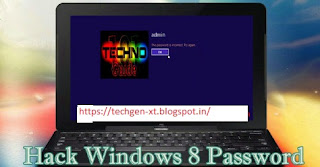Tips On How To Protect Facebook Accounts From Hacking
Hacking is a regular occurrence over the internet around the world. Email, social networking and other online accounts are at risk from being hacked into if care is not taken to keep secure information safe. And, one of the most popular targets for hackers is Facebook. Even where users have chosen strong passwords and taken extra security measures, their Facebook accounts are not safe from hackers.
So, what can you do to prevent your Facebook accounts from being hacked? In this article, we make you aware of all attacks carried out by hackers and also offer security tips to keep your Facebook account safe from hackers.
Note: This article is for security purpose only and should not be used as it is illegal. Techworm shall not be responsible for any consequences.
- Hack Facebook Account Password By Phishing
Phishing is one of the most popular attack route used by attackers for hacking Facebook accounts. While there are many methods to carry out phishing attack, a hacker in a simple phishing attack creates a fake login page, which looks similar to the original Facebook page. It then asks the victim to log in the fake Facebook page. The victim’s “Email Address” and “Password” is stored into a text file the moment the victim logs in through the fake page. The hacker then downloads the text file and is now able to view the victim’s credentials.
How To Avoid Phishing Attacks
- Never log into your Facebook account on other devices
- Avoid emails that ask you to log into your Facebook account
- Always use Chrome, as it identifies the phishing page
- Saved Passwords From Browser
The browser always asks us to save the username and passwords on the computer whenever we log in with any account in our browser. Therefore, anyone can hack your Facebook account from your browser Password Manager.
You can visit this URL and can see username and passwords you saved in your browser:
chrome://settings/passwords
Tips To Protect Yourself
- Never save login credentials on your browser.
- Always use the strong password on your computer.
- Email ID Hacking
One of the old time favourite to hack Facebook account is email ID hacking. All the hacker needs to do is access the connected email id of any Facebook account and manually reset your Facebook password.
Tips To Protect Yourself
Use Strong passwords for your email account
Enable 2 step authentication in your Gmail account
Never enter email account on unnecessary sites
- Mobile Phone Hacking
Smartphones these days have made it easy for millions of Facebook users to access their accounts through their devices. If the hacker can gain access to the victim’s mobile phone, then he can possibly gain access to his/her Facebook account. While there are several mobile spying softwares used to monitor a mobile phone, the most popular are Spy Phone Gold and Mobile Spy.
Tips To Protect Yourself
- Use a trustworthy mobile security and Antivirus program on your mobile phone
- Never install apps from unknown sources
- Uninstall suspicious apps once you notice
- Viewing Masked Passwords
Any hacker can view your masked passwords (****), if your browser has saved your Facebook login credentials. All the hacker needs to do is to make some changes from inspect element in your browser. Therefore, never leave your PC when it is on the signup page. It is recommended to never save your Facebook or other Login credentials in your browser.
6. Hack Facebook Account Password By Session Hijacking
If you are accessing Facebook on an HTTP (non-secure) connection, session hijacking can be very unsafe. A hacker steals the victim’s browser cookie in a session hijacking attack, which is used to validate the user on a website and access the victim’s account. Session hijacking is extensively used on LAN and Wi-Fi connections.
- USB Hacking
An attacker who has physical access to your computer can just insert a USB programmed with a function to mechanically extract saved passwords in the Internet browser.
How To Protect Yourself
- Insert trusted USB devices into your computer
- Scan for USB devices once you plugged in
- Don’t purchase second-hand USB devices
- Social Engineering
If you are using simple passwords like mobile number, DOB etc., then a good hacker can without any effort guess the password and hack into your account and collect your personal information.
Tips To Protect Yourself
- Never share your personal information via email, phone, chat messenger
- To avoid the risk of Baiting, block USB devices
- Avoid links from suspicious or unknown sites
- Hacking Wi-Fi Network
Any hacker can hack your Wi-Fi router, if you use a weak password to setup your router security. The hacker can hack your Wi-Fi network and hijack all your internet traffic, which can let hackers hack your Facebook account.
Tips To Protect Yourself
- Don’t use Free Wi-Fi or public Wi-Fi
- Change your Wi-Fi password on a regular basis
- If you are using public Wi-Fi, always use VPN (virtual private network)
- Logout
Leaving your computer unattended while being logged into your Facebook account is one of the biggest mistakes most people do, as it can give easy access to hackers. Therefore, ensure that you log out from your Facebook account every time you log in.
Get in touch with me to get latest updates ,for more info whatsapp me +919953576449.





